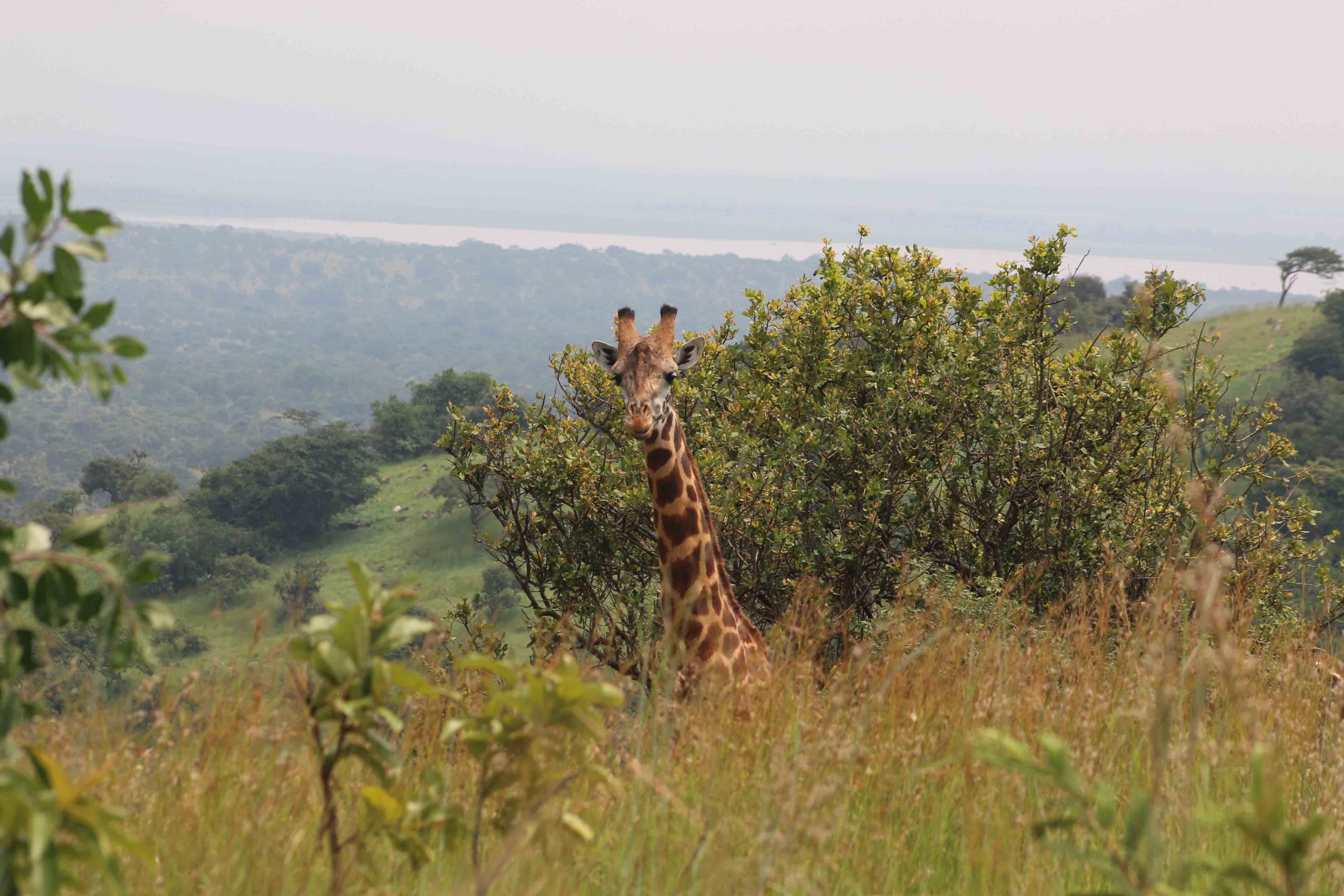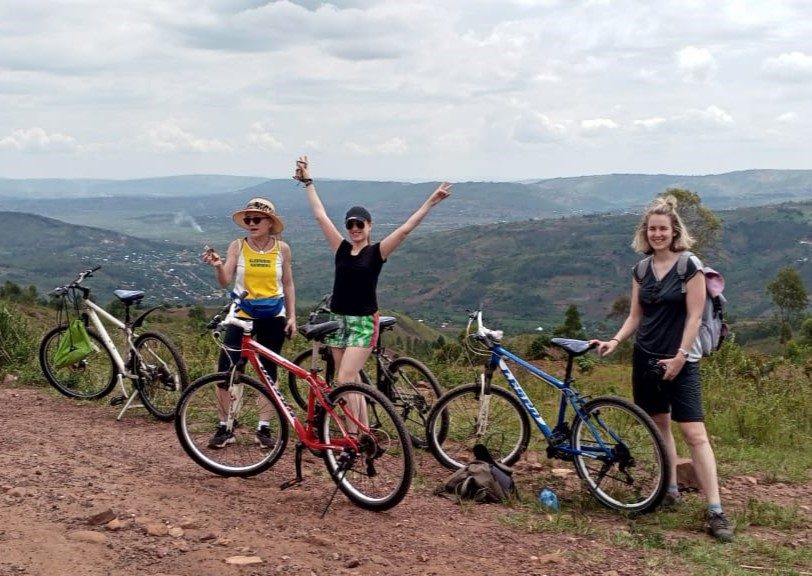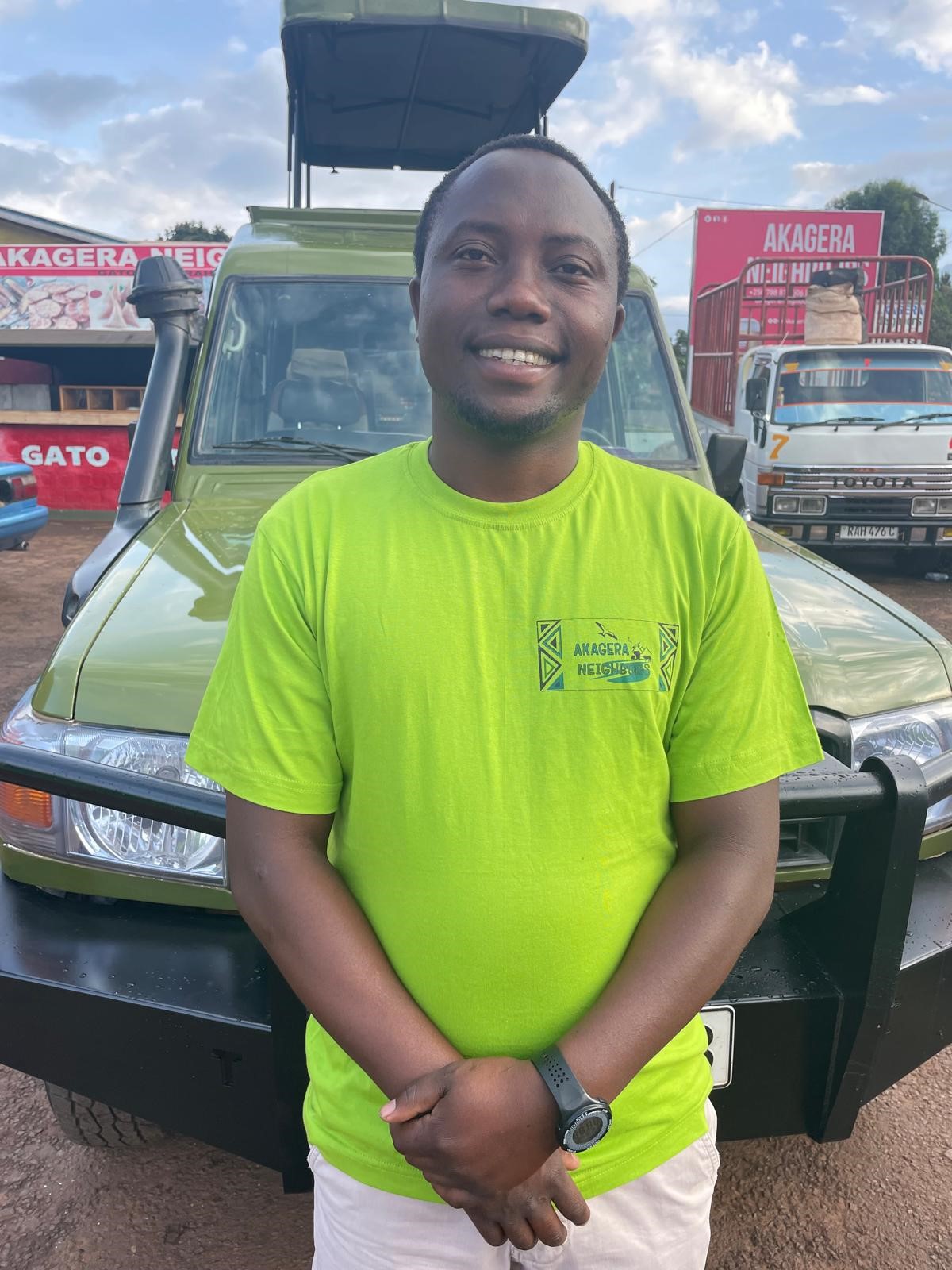The park is always ready for your visit.
Would you like to spot animals in Akagera National Park? Then, you can look for different animal species, such as hippos, crocodiles, giraffes, zebras, elephants, antelopes, monkeys, and many unique bird species. The Akagera National Park, a testament to conservation efforts, has beautiful savannah landscapes, hills, and various water features, including the Akagera River on the border between Rwanda and Tanzania. Lake Ihema, the biggest lake in the park, gets its water from it. The park’s significant investments in recent years have not only led to the addition of new animals, such as lions and black rhinos, but also to the restoration of habitats and the reintroduction of endangered species. The number of animal species in the Akagera National Park is growing again, and with its stunning landscapes, it is one of the most beautiful parks in Africa.
And yes! They have the big 5!
History
This park, founded in 1934, was a beacon of hope for the wildlife and nature in this region. It was the largest protected wetland on the African continent, home to crocodiles, hippos, abundant fish, and birds. But this park has a history of struggle. In the 1990s, it faced near extinction, a stark contrast to its current thriving state.
After the devastating genocide in 1994, many Rwandans sought refuge in this area. They resorted to cutting down large parts of the forests and foraging for food on the savannahs to survive. The park, where they built houses and farms, became their home, and wildlife became their food source. This human impact on the park’s ecosystem reminds us of our responsibility towards nature.


Despite the challenges, the park has made a remarkable recovery. After the intense period, it was decided that the residents could stay, resulting in a significant reduction in the park’s area. Yet, against all odds, Akagera National Park has bounced back. Today, it is a wonderland teeming with zebras, giraffes, rhinos, elephants, leopards, lions, buffalos, antelopes, and a diverse array of wildlife. This recovery is a beacon of hope, a testament to the resilience of nature, and a reminder of the positive impact of conservation efforts.
The following are the daily prices depending on the drive type and length:
Self-drive car rent (excluding all car related expenses)
- 1-2 days: $60 per day
- 3-7 days: $50 per day
- 8-30 days: $40 per day
Drive-guide car rent (all car related expenses, pickup, and drop-off included): from $220 to $300 per day depending on the pickup and drop-off places.
Guiding fee: $40 per day
Drive-guiding if you have your car: $60 per day
Safari car drive-guide car rent (all car related expenses, pickup, and drop-off included): from $300 to $400 per day depending on the pickup and drop-off places.

Biking
You can bike around the community for just $20 for both athletic reasons and tourism. The itinerary oversees green landscapes and a few meaningful destinations, including Zipline (philanthropic drones) and Muhazi Lake shores.

The guys guiding you
Meet your guides: Amour, Daniel, and Justus.

Amour was born near the park.
Like many others, he was once involved in the destructive practice of poaching within the park. However, a life-altering event changed his path. A dangerous snake found its way into their kitchen, and it was the intervention of mongoose, that saved the day. This incident sparked a profound realization in Amour, leading him to abandon poaching and instead, channel his creativity into making handicrafts for tourists.
Engaging with tourists and living close to the park, a new dream came true: being a guide close to tourists, the park, the beautiful landscape, and his animals.
His journey towards becoming a guide was not an easy one. He went to tourism school and immersed himself in learning all about conservation and tour guiding. Four months after school, he started his job as a guide for Akagera Park. This was the beginning of a new chapter in his life. He has now accumulated nine years of experience as a field guide and one year as a driver guide, a testament to his dedication and passion for his work.
Amour’s true passion lies in storytelling. He delights in sharing the rich history of the park and its unique landscape, weaving a narrative that connects the present with the past and the park with the community. His stories are not just tales, but bridges that bring people closer to the park’s essence.
His favorite animal is the leopard, although it is hard to find.
“This is not just a job for me; it’s a way of life. Every day, I learn something new, meet new people, and witness the beauty of the park and its animals. It’s a love affair that doesn’t feel like work.”
Amour speaks Kinyarwanda, basic Swahili, English and French.

Daniel lives near the park, enjoying the wildlife.
He did education in the first place. He applied to an advert from the park. He started working there in 2013 and moved to tourist guiding in 2014. He learned by doing; he got his training from the park. He worked for the park for 9 years and the last 2 years as a freelance guide. He is also the CEO and Co-founder of Akagera Community Freelance Guide.
Daniel’s knowledge in birdwatching is unparalleled. During a training session, he spotted a rare, minuscule bird, which he proudly added to his list of sightings. The trainer, initially skeptical, was proven wrong when Daniel was the only one to correctly answer a question about this very bird during an exam. This incident solidified his reputation as ‘the birder’ of Akagera Park, and he has since shared his knowledge with numerous guides.
Apart from the birds, his favorite animals in the park are the big five.
Daniel’s love for tourism extends beyond the thrill of exploration. It is a platform for him to educate others on the importance of preserving nature and wildlife for future generations. A tour with Daniel is not just a wildlife adventure, but also a cultural immersion, offering a glimpse into the rich traditions of Rwanda.
Daniel speaks Kinyarwanda and English.

Justus lived close to the park. His profession was being a carpenter.
As a young boy, Justus ventured to collect firewood. On one such expedition, he stumbled upon a massive dead tree. Determined to bring it home, he returned with an axe. However, his plans were thwarted when a group of monkeys attacked him, instilling a deep fear. Fortunately, a local herder’s intervention scared the monkeys away. This incident left a lasting impression on Justus, leading him to leave the tree in the forest, respecting it as the habitat of the animals.
In 2015, the park put out a call for community members to become guides. This piqued Justus’s interest, leading him to delve into research. He started his journey as a community freelance guide, and by 2022, he had transitioned into a park driver guide. Since 2024, he has been operating as a freelance driver guide, a testament to his dedication and passion for wildlife.
His specialty are the mammals and carnivores; his favorite animal changed from monkey to elephant.
Justus is a passionate advocate for introducing children to the wonders of the park and its wildlife. His dream is to bring 30 children every six months to the park, providing them with firsthand experience and knowledge about wildlife. This aspiration reflects his deep commitment to conservation and his hope to inspire the next generation of wildlife enthusiasts.
Justus speaks Kinyarwanda and English.
Exclusive Offer
Get 10% Off Your First Trip
From Topi, Eland, Roan, Impala, Zebra, Masai Giraffe, Bush Buck, Boar, Hippo, and Baboon who are happy to make you smile. Birds will of course keep their beautiful displays and songs to keep you entertained for at least six hours.
